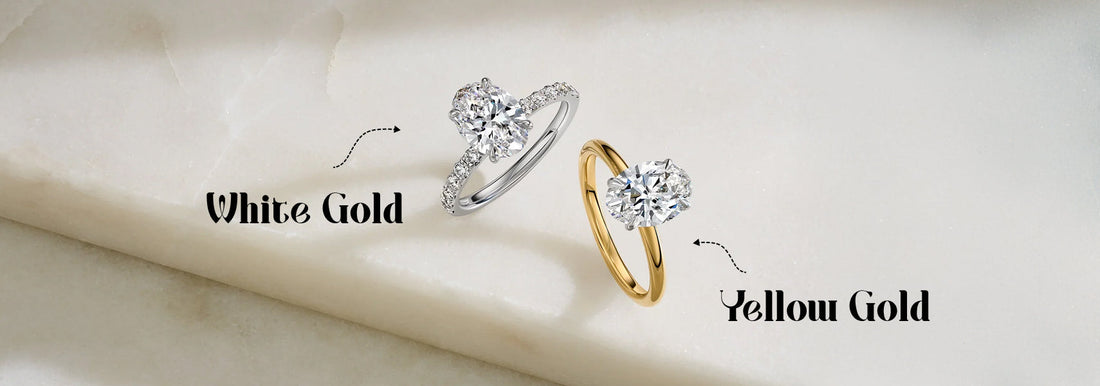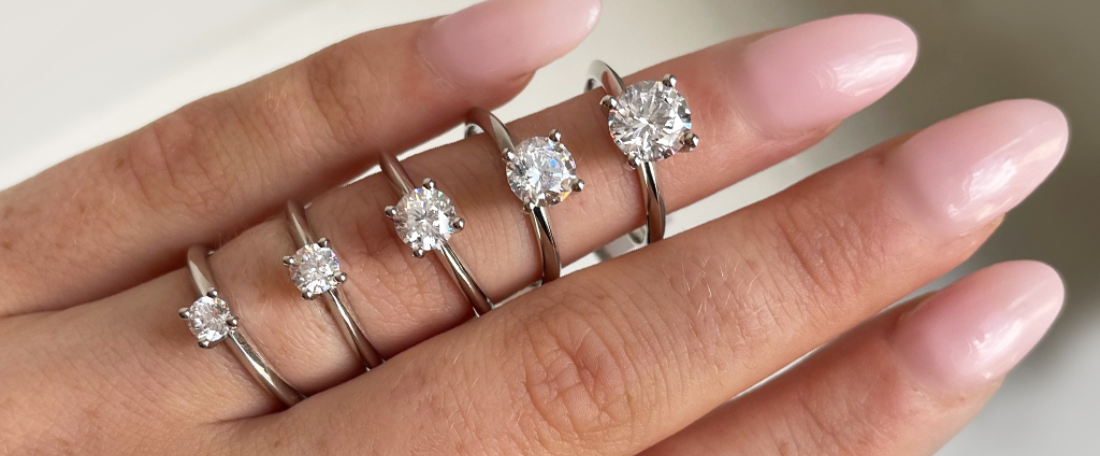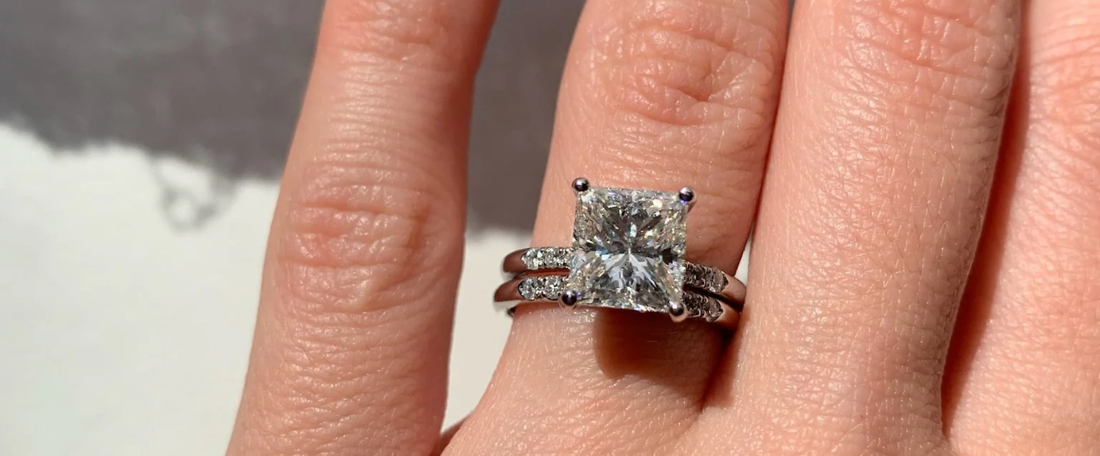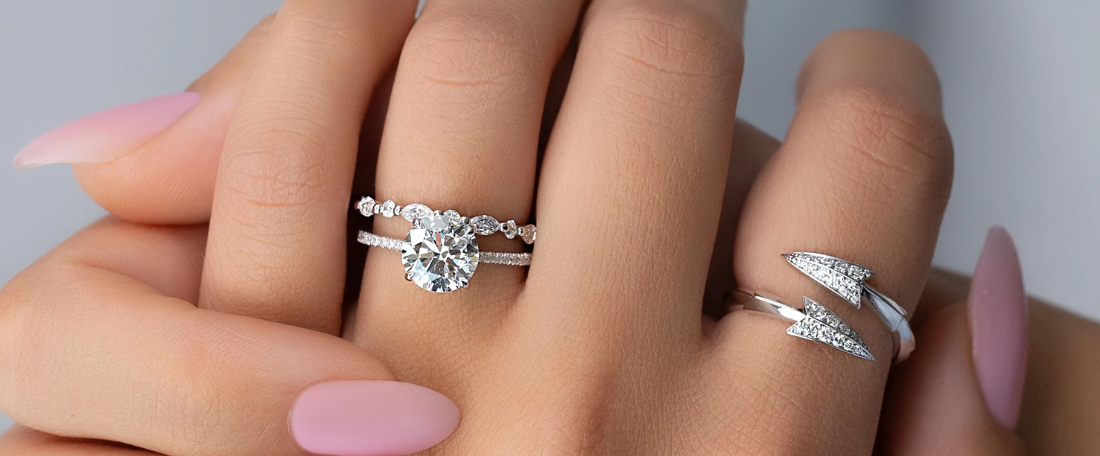Are you fond of jewelry? You are not the only one. Mostly, all women fall in love with jewelry. They will have a unique collection to pair with their outfits. Two common varieties of gold used in jewelry are white gold and yellow gold. Pure gold is combined with metals like palladium or silver to create white gold.
The traditional form of gold with a warm yellow tint is called yellow gold. It is created by mixing copper and pure gold. You should have a clear idea of white gold vs yellow gold to pick the best option. Both varieties are highly prized for their beauty and adaptability. This makes them excellent options for all types of jewelry. Continue reading to learn more about white and yellow gold.
What Is White Gold?
Pure gold is combined with white metals to create white gold. The jewelers frequently apply a rhodium coating to improve its longevity and sheen. Many people doubt what color is white gold. It is a silvery-white metal alloy. White gold is used for jewelry because of its unique appearance and durability. It needs routine care to maintain its shine for a long period.
Different karats represent the proportion of pure gold in the alloy. People prefer white gold color over platinum because it is less expensive while maintaining an attractive appearance. It is a popular choice for all types of jewelry. White gold is a timeless and refined choice for jewelry creation.
What Is Yellow Gold?
Yellow gold is a traditional and popular type of gold. It is popular for its warm and rich color. Yellow gold is an alloy composed mostly of pure gold combined with additional metals to increase its strength and durability. It retains its original tint, making it highly regarded for its traditional and timeless appeal.
It is a popular choice for fine jewelry due to its historical significance and lasting value. It is known for its warm and appealing hue and is frequently used for jewelry. Yellow gold is not only a gorgeous material but also a low-maintenance option. Whether for a modern addition to a jewelry collection or an heirloom piece handed down through the generations, yellow gold is still popular because of its elegance and classic appeal.
What Is the Difference Between White Gold vs. Yellow Gold?
| Aspect | White Gold | Yellow Gold |
|---|---|---|
| Appearance | White gold has a silvery-white color. It typically has a more modern and polished appearance. | Yellow gold has a rich and warm look. It is the traditional material for many jewelry creations. |
| Composition | White gold is often created by combining yellow gold with other white metals, such as palladium and silver. Then, it is coated with rhodium to get its white tint. | To keep its natural yellow color, yellow gold is manufactured from pure gold. |
| Durability | White gold is strong and resistant to tarnishing, but the rhodium plating might wear off over time, necessitating re-coating. | Yellow gold is softer than white gold, more easily scratched, and does not require plating. |
| Cost | White gold is typically more expensive than yellow gold due to the additional metals needed and the rhodium plating process. | Yellow gold is cheaper than white gold since it is less processed and does not require rhodium plating. |
| Hypoallergic Properties | White gold may include nickel, which can trigger allergic reactions in some people. High-quality white gold may contain hypoallergenic palladium or platinum. | Yellow gold is generally hypoallergenic and less prone to induce skin sensitivities, particularly at greater carat purity levels. |
| Maintenance | White gold requires greater maintenance. It can wear off over time and must be re-coated. | Yellow gold is less maintenance-intensive because it does not need to be replaced. |
| Color Trends | White gold is popular for modern, contemporary designs and is often preferred in engagement rings and other fine jewelry. | Yellow gold is timeless and classic, and it is associated with traditional jewelry styles, but its popularity has recently grown. |
| Tarnishing | White gold can tarnish quickly. The rhodium coating may dull with time. | Yellow gold does not tarnish, although it may develop a patina over time from oxidation, which some people prefer. |
| Popularity | White gold is gaining popularity in modern and minimalist designs, particularly for engagement rings and wedding bands. | Yellow gold is still a popular choice for classic and vintage-style pieces and has recently reappeared in fashion. |
| Weight | White gold is typically lighter than yellow gold due to the alloys employed in its composition. | Yellow gold is denser than white gold, particularly in higher purity forms. |
| Resale Values | White gold normally has a similar resale value as yellow gold, albeit the condition of the rhodium coating can alter the price. | Yellow gold keeps a high resale value because of its natural color and purity in its unalloyed state. |
| Environmental Impact | White gold production may have a greater environmental impact than mining for other metals such as palladium, nickel, or platinum. | Yellow gold has a reduced environmental impact since it often contains fewer alloying metals and is more like its native state. |
From the tabular column, you can clearly understand white vs yellow gold.
Why Choose a White Gold Engagement Ring?
Choosing a white gold engagement ring is a common and classic option. It features a sleek and elegant style that pairs beautifully with various jewels. It is an excellent choice for any engagement ring design. Before choosing the ring, it is essential to have a clear idea of what is white gold. It boosts its resistance to tarnishing and scratches by allowing the ring to survive for many years.
Another advantage of white gold is its lower cost than platinum, which has identical properties but costs more. Additionally, white gold can be easily maintained with rhodium plating, which improves its luster and brightness with time. For those looking for a modern and affordable solution, a white gold engagement ring is an ideal choice that represents both love and durability.
Why Choose a Yellow Gold Engagement Ring?
Yellow gold engagement rings are timeless and traditional. Their rich, warm color represents love and tradition, making them ideal emblems of a lasting partnership. Yellow gold is also an excellent choice for diamond rings for women. Its natural brilliance requires little maintenance and acquires a lovely patina that adds to its appeal.
Yellow gold also looks great with a range of jewels, especially diamonds, creating a visually appealing contrast. Whether you choose classic or modern designs, a yellow gold engagement ring provides timeless elegance that will never go out of style. It is a sign of lasting love and an excellent choice for couples looking for something traditional and meaningful.
The Pros and Cons of White and Yellow Gold
White and yellow gold are two of the most common varieties of gold jewelry, which is a classic choice. Depending on maintenance requirements and personal preferences, each offers pros and cons.
White Gold
Pros
- White gold is less expensive than platinum but has a clean and contemporary look.
- It is more resilient than yellow gold because it is frequently alloyed with stronger metals like palladium or nickel.
- It enhances the brilliance of diamonds and other jewels.
Cons
- It costs more to maintain because it needs to be rhodium-plated regularly to keep its brilliant white sheen.
- The underlying gold may become slightly yellowish as the coating wears off.
Yellow Gold
Pros
- Yellow gold is classic and traditional, with a warm, rich tone that complements vintage and antique-style jewelry.
- It is hypoallergenic since it has no nickel.
- It is easier to resize and pair than white gold.
Cons
- Softer than white gold, and it is more easily scratched and dented.
- It may need to be polished frequently to retain its shine.
- Compared to white gold's neutral appearance, it may not complement all gemstones.
- The decision between white and yellow gold comes from personal preference, maintenance needs, and lifestyle factors.
Conclusion
Discover the elegance of Vana Jewels, where classic workmanship meets modern sophistication. Elevate your style with lab-grown diamond rings and earrings, all made to make every occasion memorable.
Whether you celebrate love or simply yourself, their ethically sourced, best-quality products are an excellent choice. They offer two-tone engagement rings of the best quality. Shop now and experience luxury that will last a lifetime. Visit Vana Jewels to find the ideal jewelry. Limited-time discounts are available! Shine with confidence with Vana Jewels!
FAQs?
What Is the Major Distinction Between White and Yellow Gold?
Yellow gold is naturally golden, whereas white gold combines nickel and rhodium plated metals for a silvery appearance.
Which One Is More Durable?
White gold is harder than yellow gold because of its alloy composition, making it more scratch-resistant.
Does White Gold Eventually Turn Yellow?
Yes, the rhodium plating wears away, revealing a slight yellowish color, but it may be replaced.
Which Metal Requires the Most Maintenance?
White gold requires periodic rhodium replating to keep its dazzling sheen. The yellow gold requires frequent cleaning to remove scratches and maintain luster.
Which Gold Color Complements Diamonds Better?
White gold improves the brilliance of colorless diamonds by eliminating yellowish reflections. It is the best option to complement diamonds.










